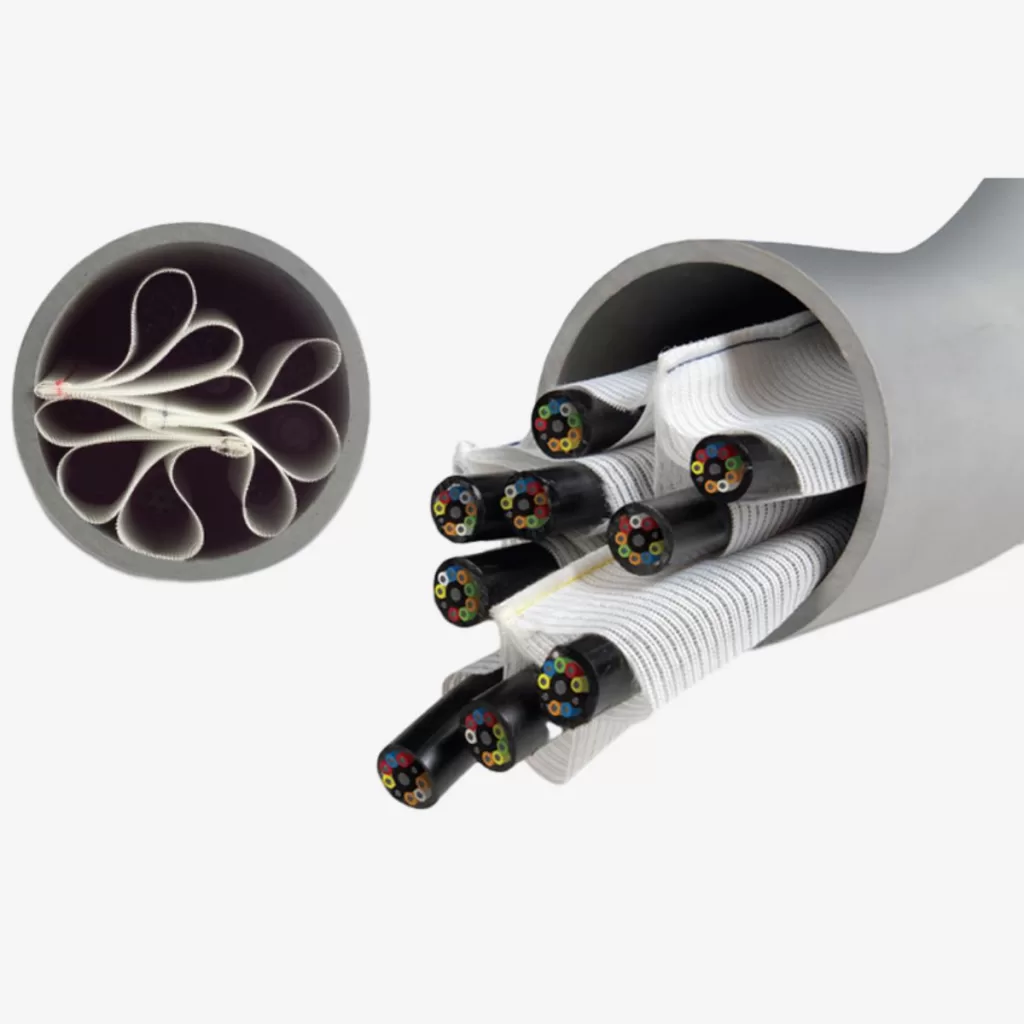
China Innerduct Fabrik has emerged as a tempting alternative in the world of network infrastructure. While established brands like MaxCell hold a strong position, the potential for significant cost savings with Chinese options is undeniable.
Understanding Fabric Innerduct
Before diving into Chinese options, let’s establish a clear understanding of fabric innerduct:
Fabric innerduct functions:
Fabric innerduct is a flexible sleeving, typically made from synthetic fibers like nylon or polyethylene. It’s designed for installation within existing rigid conduits used in network infrastructure.
Fabric innerduct benefits:
Increased Capacity: Fabric innerduct conforms to the shape of cables, maximizing space utilization within conduits compared to rigid pathways. This allows for more cables to be housed in existing infrastructure, potentially delaying the need for expensive conduit expansion projects.
Future-Proofing: The inherent flexibility of fabric innerduct leaves valuable space within the conduit for future cable additions. This caters to evolving network requirements and bandwidth demands without requiring conduit replacement.
Faster Installation: Lightweight and flexible, fabric innerduct facilitates faster and easier installation, especially when navigating bends and obstacles within conduits. This translates to reduced labor costs compared to working with rigid conduits.
Minimized Disruption: Adding new rigid conduits often necessitates extensive excavation or disruption to existing infrastructure. Fabric innerduct installation requires minimal disruption, saving time and minimizing downtime for critical operations.
The China Fabric Innerduct Landscape
The Chinese market offers a vast array of fabric innerduct manufacturers, with varying levels of quality and experience. Here’s a breakdown of key considerations specific to China Fabric Innerduct:
- Material Composition: Material quality is paramount. While some Chinese manufacturers might utilize synthetic fibers similar to established brands, others may opt for less expensive alternatives that could compromise durability and performance. Be wary of unspecified or unclear material compositions.
- Construction: Unlike branded products with consistent multi-cell designs (e.g., 3-cell for increased cable organization), Chinese innerducts might have simpler constructions without compartmentalization. This can impact cable organization and separation.
- Compliance: Ensure the chosen China Fabric Innerduct adheres to relevant fire safety standards required in your region. Don’t assume compliance; request certifications.
More Advantages of China Fabric Innerduct
- Keberkesanan kos: The primary advantage lies in the significantly lower upfront cost compared to established brands. This can be a major factor for budget-conscious projects.
- Market Diversification: The growing number of Chinese manufacturers fosters competition, potentially driving innovation and improvements in quality. Careful research can help identify reliable suppliers with potentially improved options.
Kesimpulan
China fabric innerduct is a strategic investment for your cable infrastructure. It helps you optimize current capacity, plan for future growth, and potentially save money on installation and future upgrades. FiberCheap is a professional fabric innerduct manufacturer with 14 years of experience, if you’re looking for a fabric innerduct solution that offers superior quality, durability and cost-effectiveness, please feel free to hubungi Kami.
